In December 2024, Pantone announced our current color of the year: Mocha Mousse. I was not thrilled, to put it mildly. There is plenty of brown in nature (I spend half the year looking at brown fields and bare brown trees), so I don’t need more brown in my fabric stash.
However, I have participated in the Pantone Quilt Challenge nearly every year, and the best way to become a better artist is to constantly push beyond your comfort zone. So, I made a Mocha Mousse mini Quilt. Let’s take a look at the results.
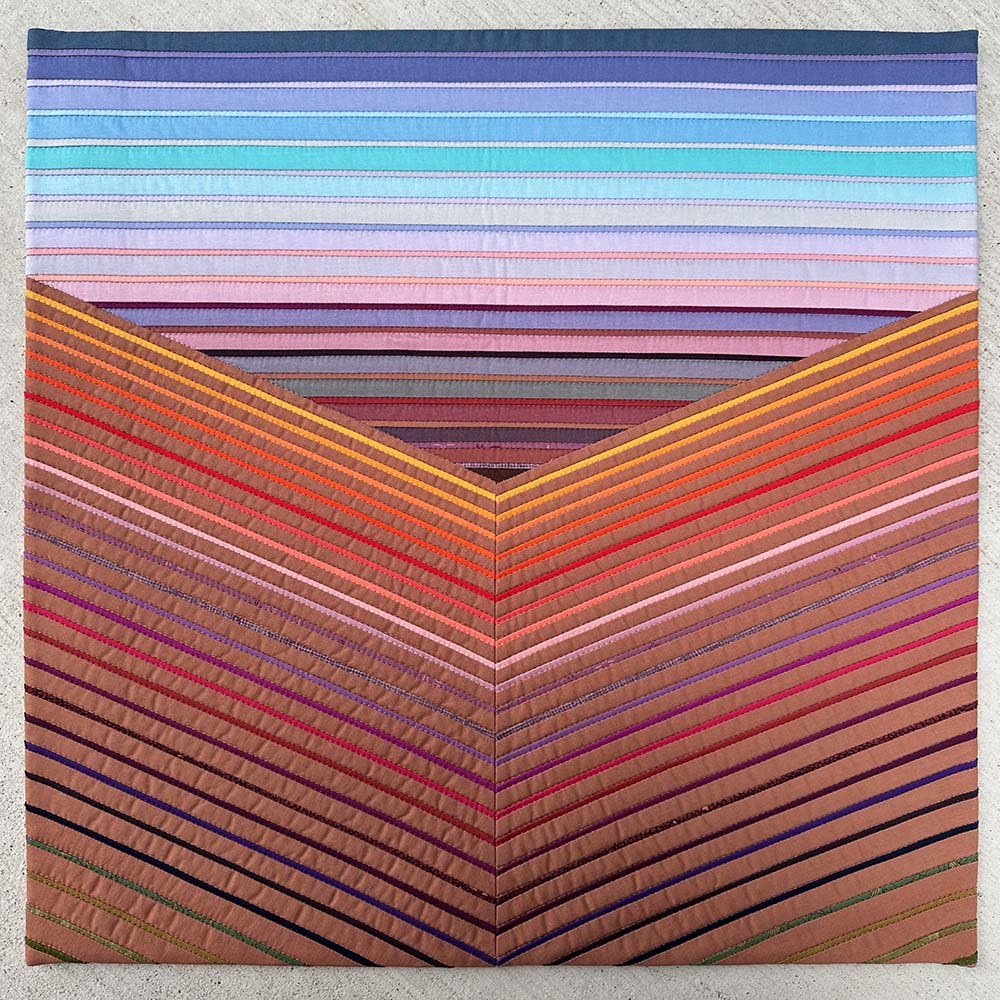
Inspiration
Last Summer, I took a road trip that included traveling along Interstate 70 through Utah and Colorado. I had traveled this route many times in my twenties, and I knew that stopping at the scenic overlooks was a high priority because each is spectacular.

The overlook near Emery, Utah, has one of the most dynamic views, which inspired the design of this quilt. Rather than going for realism, I honed in on the key compositional elements of this location: Two red rock formations angled towards each other with the Rocky Mountains appearing in the distant skyline.
The photograph doesn’t do this view justice, and the enormous color range of the rock formations doesn’t translate well in most pictures. While brown appears as the dominant color in the photograph, I immediately planned to incorporate a range of colors to enliven the quilt, similar to how the real formations are infused with color.
Design
I knew early on that I wanted to capture the essence of this location by identifying a few key angles and repeating them throughout the composition. The first step was to put the image in AutoCad and experiment with angle placement.
Once I had the three key angles I wanted to include, I started drawing echoing lines that alternated between a 1/8″ wide piece and a wider section. The image on the left was the first one I drew, with all of the wider sections having an equal width. This option felt flat, so I experimented with gradually increasing that width as you move out to the top and bottom edges of the design.
Fabric Pull
The hosts of the Pantone Quilt Challenge compared the official Pantone Mocha Mousse Swatch with commercially available solids, and I went with the closest option, Windham Ruby and Bee Field Mouse. All of the other fabrics came from my stash. This small quilt has dozens of colors but in very small amounts, so my fabric pull consisted of 2″ wide strips.

Constructing the Quilt Top
The entire quilt top is foundation paper pieced in three sections. The paper templates add stability that helps maintain a consistent width of each strip without any warping that could happen with traditional piecing techniques.

All of the wider strips in the lower sections are Mocha Mousse. The highlight colors occasionally repeat in the upper section of the quilt, which subtly helps tie together the overall composition.

I love how the trimmings from foundation paper piecing capture the overall palette of a quilt!
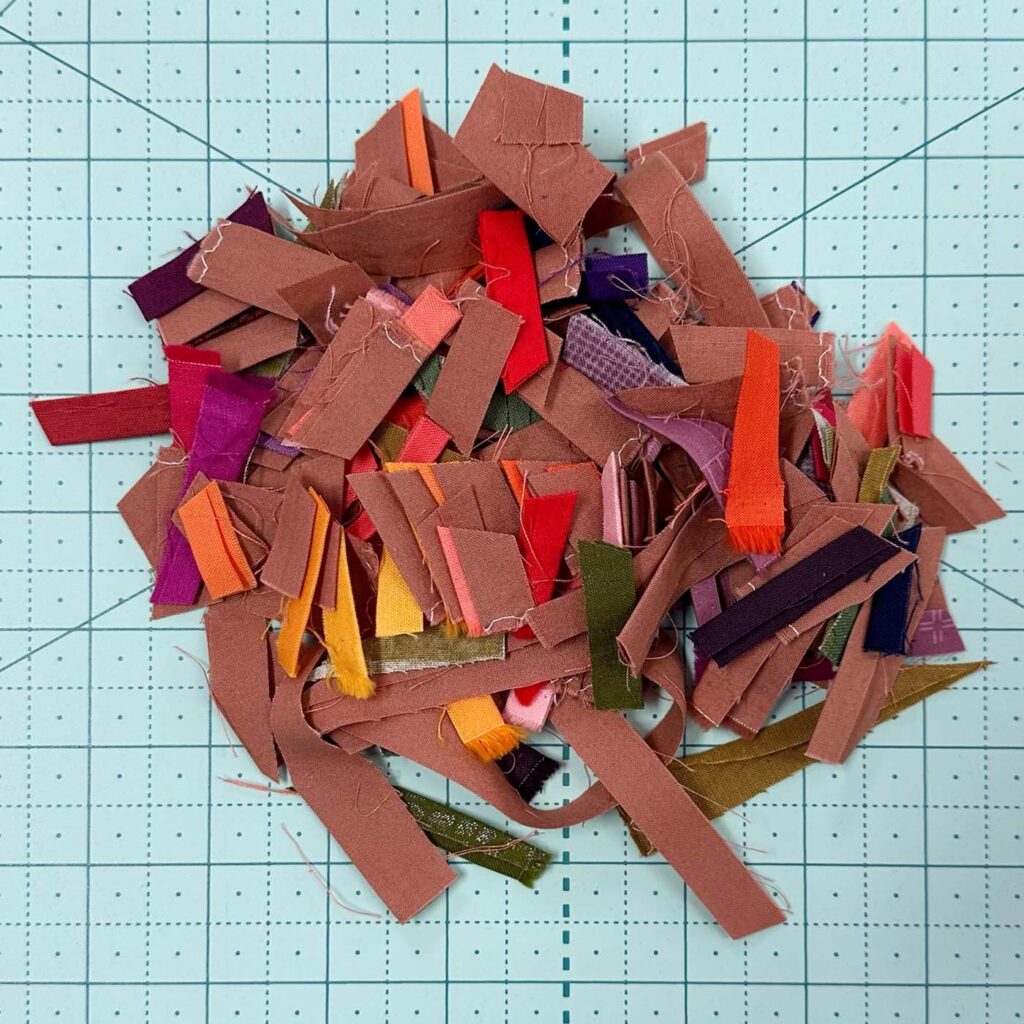
After carefully removing the paper, I was left with my finished quilt top. If you look closely at this quilt back, you will notice a couple of things:
First, most of my seam allowances have multiple lines of stitching. I trimmed my seam allowances slightly wider than 1/4″ to ensure they would get stitched through numerous times. This technique adds a bit of heft to a small quilt and provides extra structure to stabilize those straight lines.
Second, there are a lot of loose threads. With every fabric piece cut on the straight grain, there is more fraying than most FPP with a mix of straight and bias edges. If this quilt consisted of single layers of white fabric, I would meticulously trim all those loose threads. However, this quilt has doubled seam allowances over most of the quilt and very few light colors, so these threads won’t affect the finished product.

Quilting
This particular design focuses on the graphic quality of the lines, so piecing is the star of the show rather than the quilting stitches. To give subtle texture without overwhelming the design, I used a Clear Aurifil Monofilament Thread and stitched each seam in the ditch.
Monofilament has some stretch, so it can be challenging to use in a bobbin. I will do this occasionally, but this quilt didn’t require it, so I used a 50-weight cotton Aurifil in the bobbin.
I quilt using a walking foot on my BERNINA 770QE PLUS, which has a preset stitch for quilting, 1302, my favorite starting point for most of my walking foot quilting. After doing a test line of quilting, I reduced the tension slightly from 4.00 to 3.75.
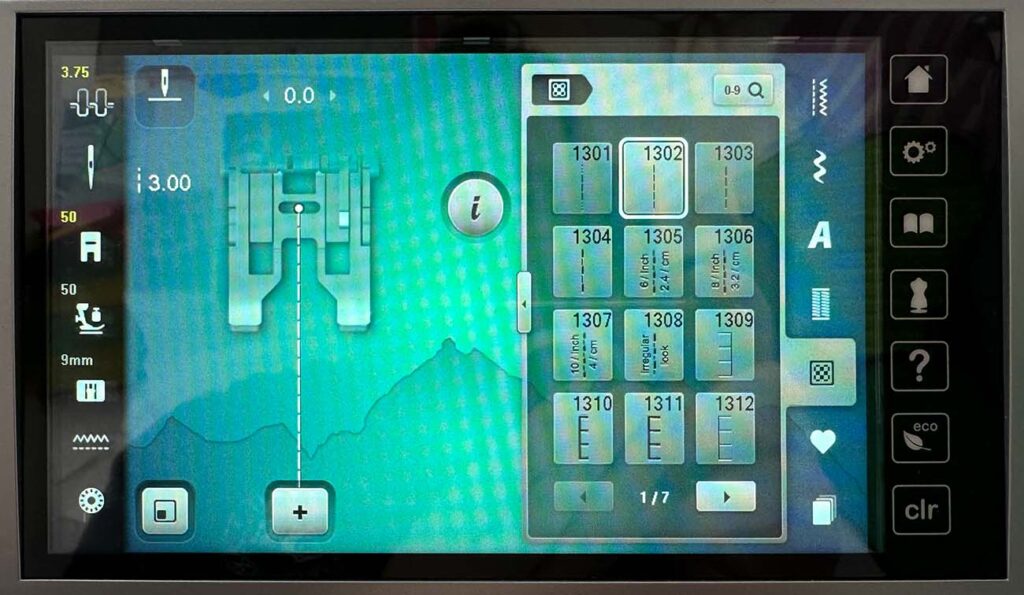
The BERNINA walking foot has three sole options, including one with a central guide perfect for stitching in the ditch.

The finished quilting is subtle but gives a light texture to the quilt.

Finishing
The edges of this quilt didn’t want a binding to truncate the lines, so I did a faced edge to finish the quilt.
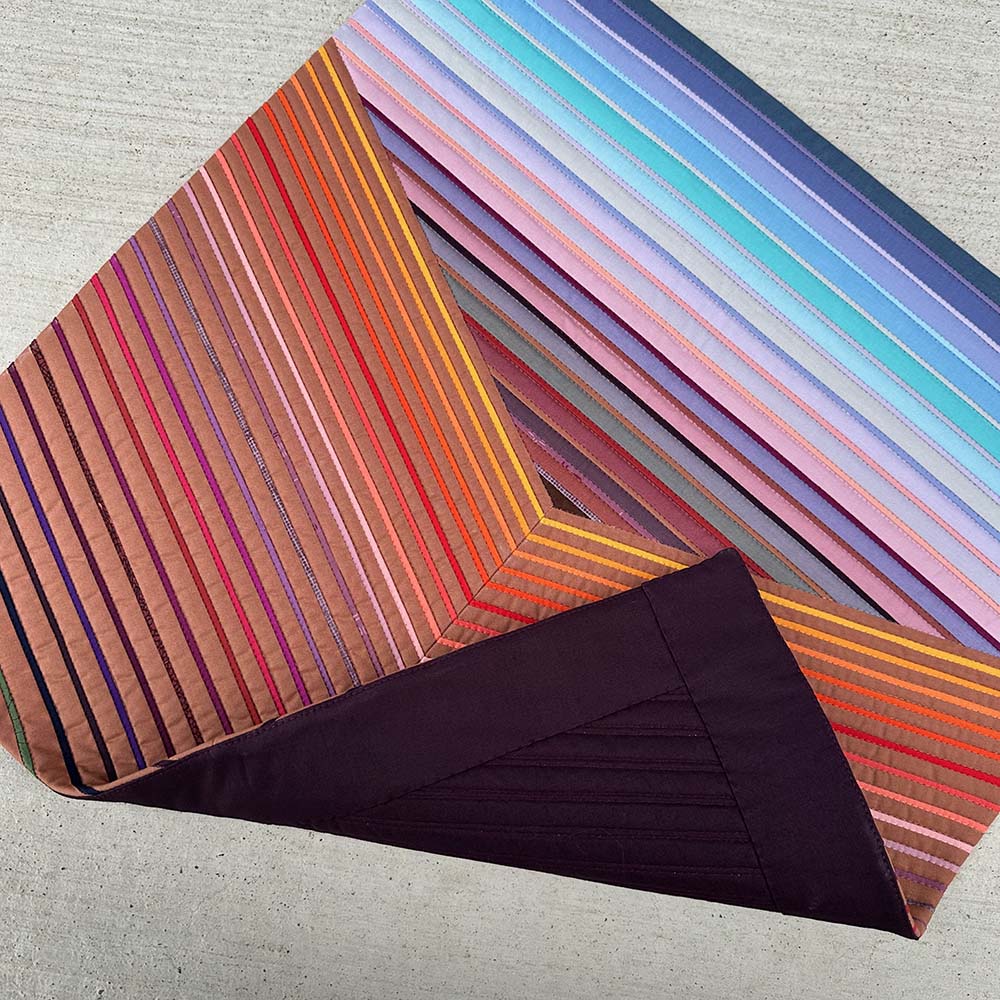
Quilt Stats:
- Size: 20″ x 20″
- Techniques: Foundation Paper Piecing, Machine Piecing, Y-seam
- Quilting: Stitching in the ditch with a walking foot on a BERNINA 770QE PLUS
- Fabric: Windam Ruby and Bee Field Mouse, assorted solids that are mostly Painter’s Palette Solids, Accenting Prints
- Batting: Hobbs Tuscany 80/20 blend
- Thread: Aurifil Monofilament and 50-weight cotton
- Edge Finish: Facing


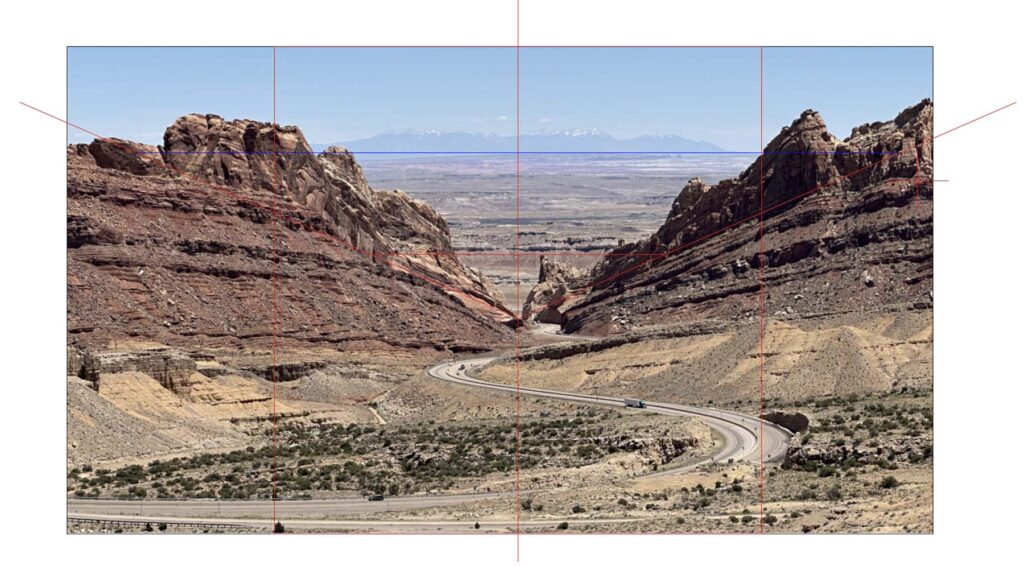
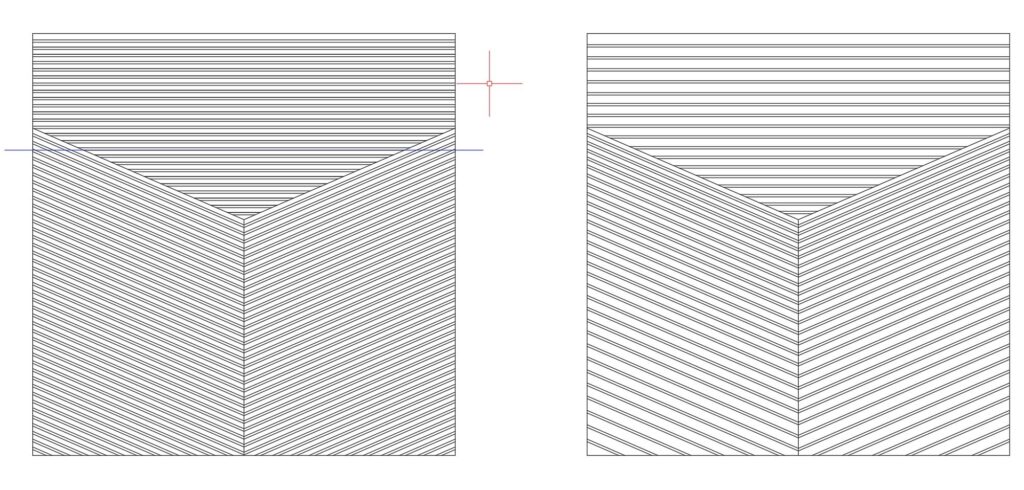
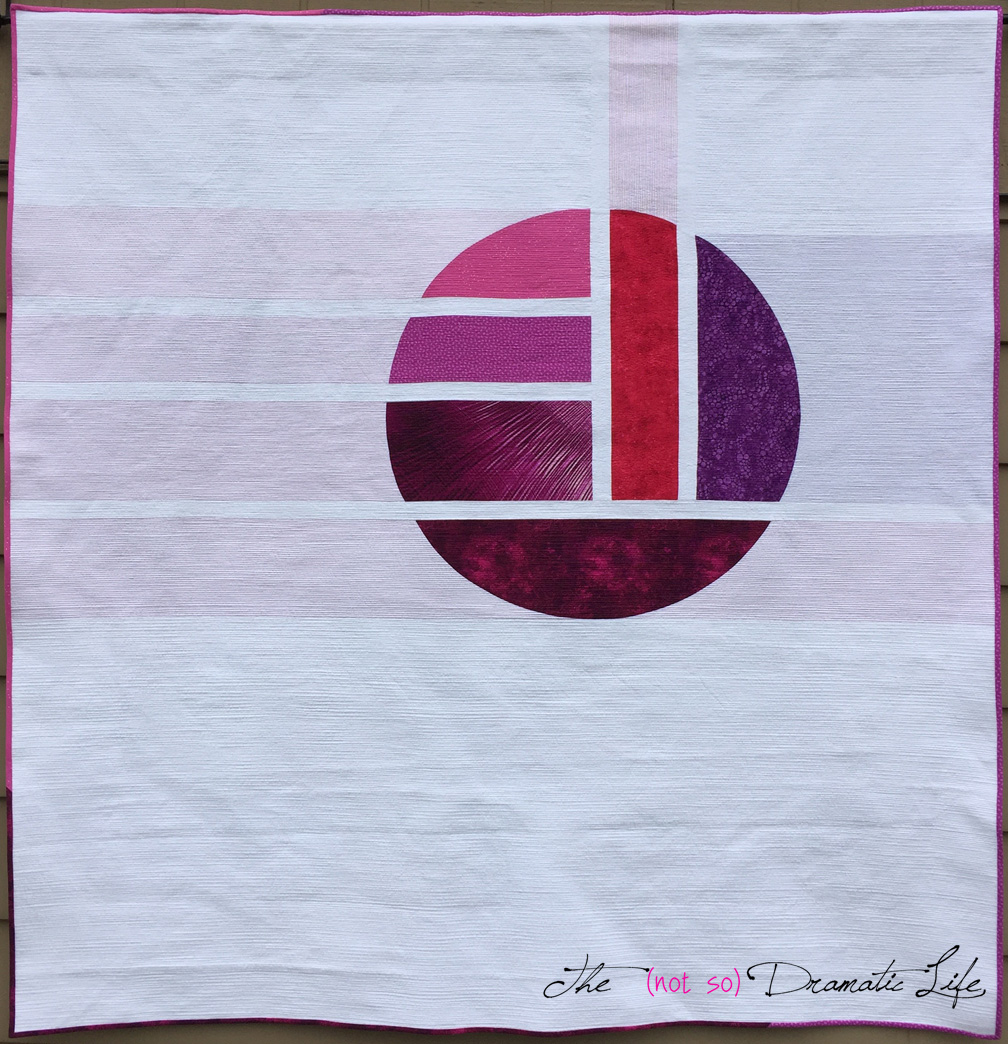
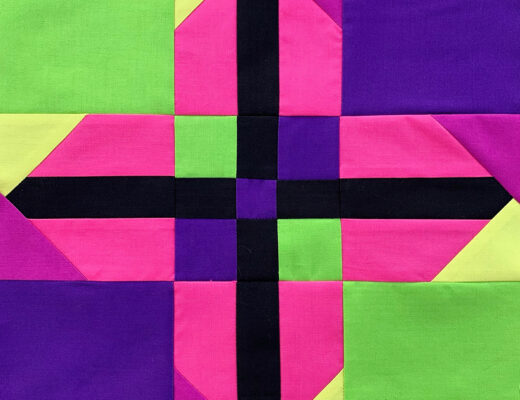
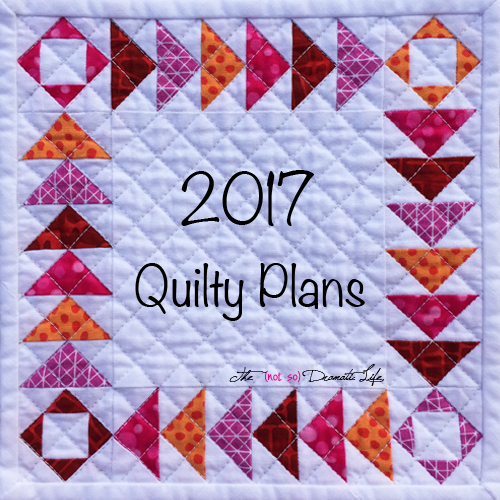

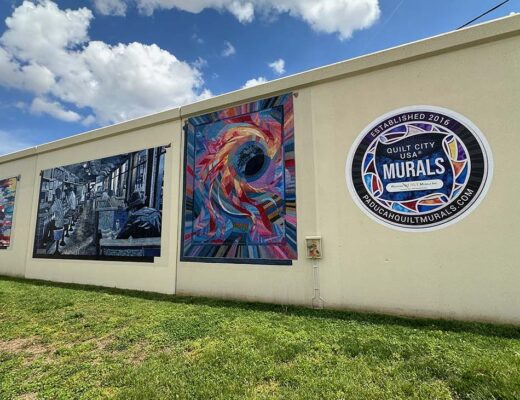
3 Comments
lynn bourgeois
April 18, 2025 at 8:03 amGood morning Cassandra. Your challenge piece is both interesting and beautiful. Thank you for sharing your creative journey in this post. Might I assume that you drew the lines for the pp sections? I believe you mentioned that the piece contained three separate pp sections.
Recently I purchased a walking foot for my Bernina 880, but haven’t used it yet. This is timely as I’m gettinng ready to quilt three baby/small child quilts for out guild ( donations for the provincial children’s hospital. ) Two are flannelette, and I am not sure about tensions for the projects.If you have other words of wisdom, please pass them on
Thanks
Lynn
Kim
April 18, 2025 at 6:52 pmOh, this is so fun to look at! Thank you for sharing the process on how this quilt all came together. (Brown is my favorite color! Ha ha!)
3 Ways to Create Dynamic Quilt Designs Using Research Images – The (not so) Dramatic Life
June 20, 2025 at 1:57 am[…] Mocha Mousse Mountains, I started with a photograph I took at a scenic overlook off the interstate in Utah last Summer. I […]